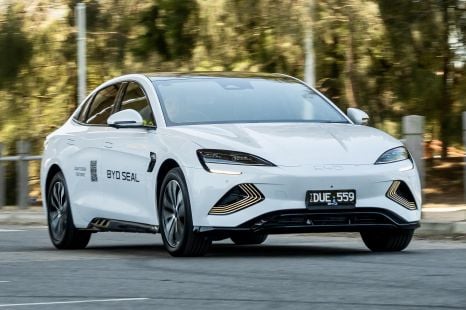

Max Davies
2026 BYD Seal review
22 Hours Ago
Guest User
My dashboardThe last Hyundai Kona Electric was a bit of a pioneer in Australia. The new model lobs into a busier market, and has a bigger challenge ahead of it.
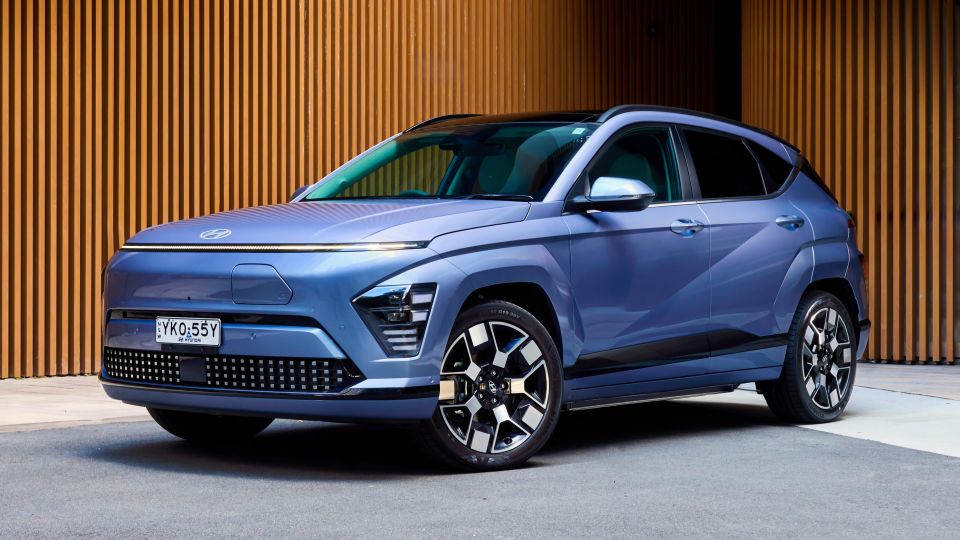
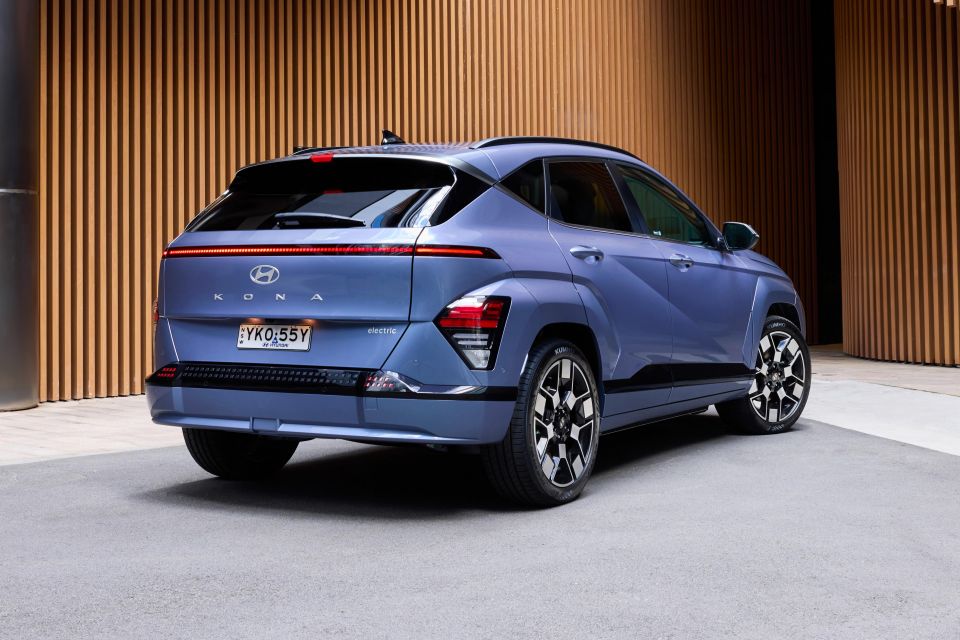

Where expert car reviews meet expert car buying – CarExpert gives you trusted advice, personalised service and real savings on your next new car.
The first Hyundai Kona was early to the electric car party in Australia, launching before even the Tesla Model 3.

The new one arrives to a very different market. Electric car sales exploded in 2023, with a huge crowd of new models from upstarts and established players alike fighting for attention – so the new Kona needs to be good to stand out.
Hyundai is offering plenty of choice for 2024, and says the new Kona Electric is a more rounded, modern product than its predecessor.
It’s also a cheaper one, with prices dropping relative to the equivalent pre-update model despite packing more space, more kit, and more range.
Does the new Kona Electric have what it takes to give Tesla, BYD, and MG a bloody nose?
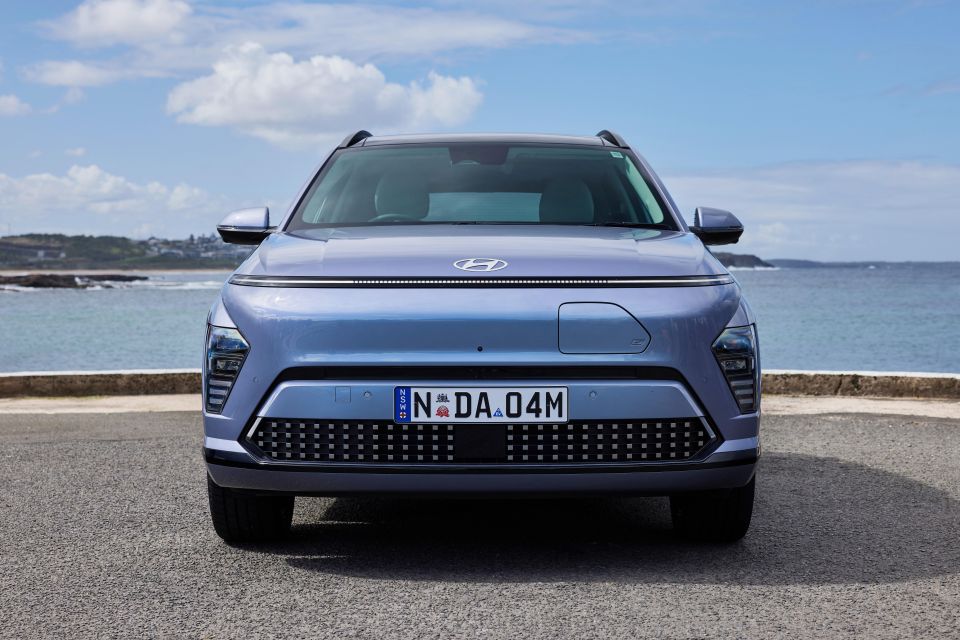
Prices exclude on-road costs
The Kona Electric faces off with a number of SUVs, featuring both electric and petrol power. To see how it shapes up, use our comparison tool.
Buy your new car without the stress. It's fast, simple and completely free.

Great service from Travis and team, second time I have used this business would not hesitate to recommend them to anyone
Craig C.
Purchased a Ford Ranger in Sunshine Coast, QLD
CarExpert helped Craig save thousands on his Ford Ranger, now let us save you on your next new car.
Find a dealThe last Kona Electric was quite heavily differentiated from its petrol siblings with a futuristic, button-heavy dashboard.
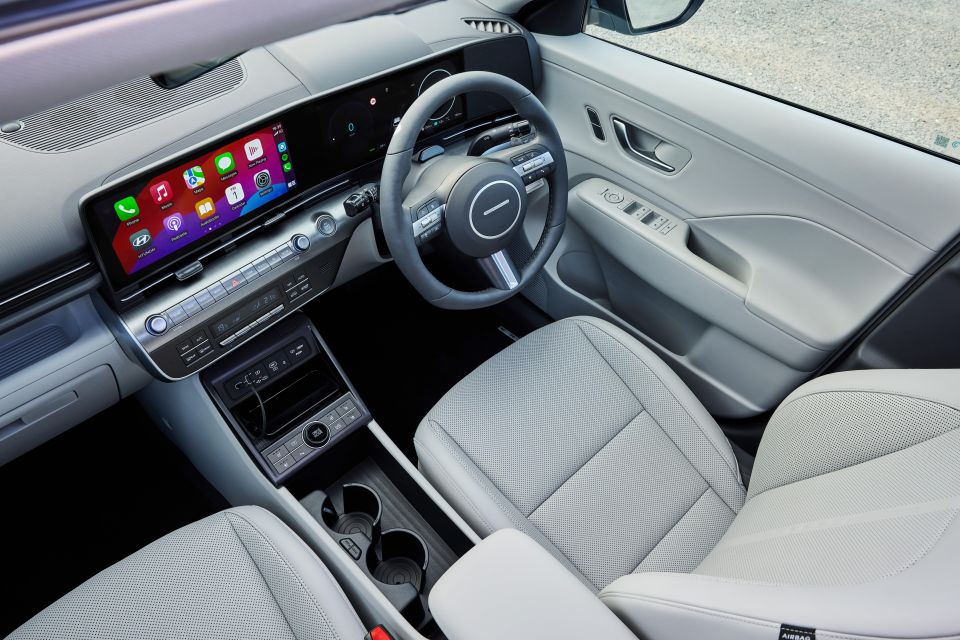
The new one is, for all intents and purposes, identical to the petrol and hybrid. That’s a good thing; it’s a modern and spacious interior, which makes the cramped previous-generation car look very, very old.
Presentation is impressive across the range, and the fundamentals are solid. The front seats are comfortable on long hauls and offer a range of adjustment allowing tall or short drivers to get comfortable, while the view over the bonnet is more ‘shrunken Tucson‘ than ‘overgrown i30‘ as was previously the case.
Credit to Hyundai for sticking with physical buttons and dials for the climate controls and drive mode. It’s easy to flick into Sport, for example, or knock the temperature up by one degree without taking your eyes off the road, as should be the case.
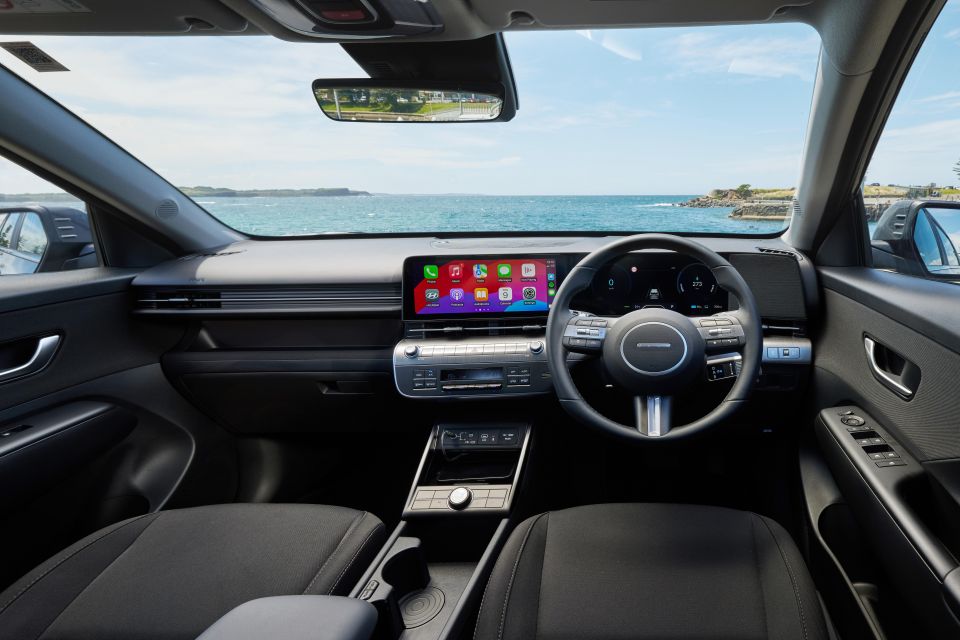
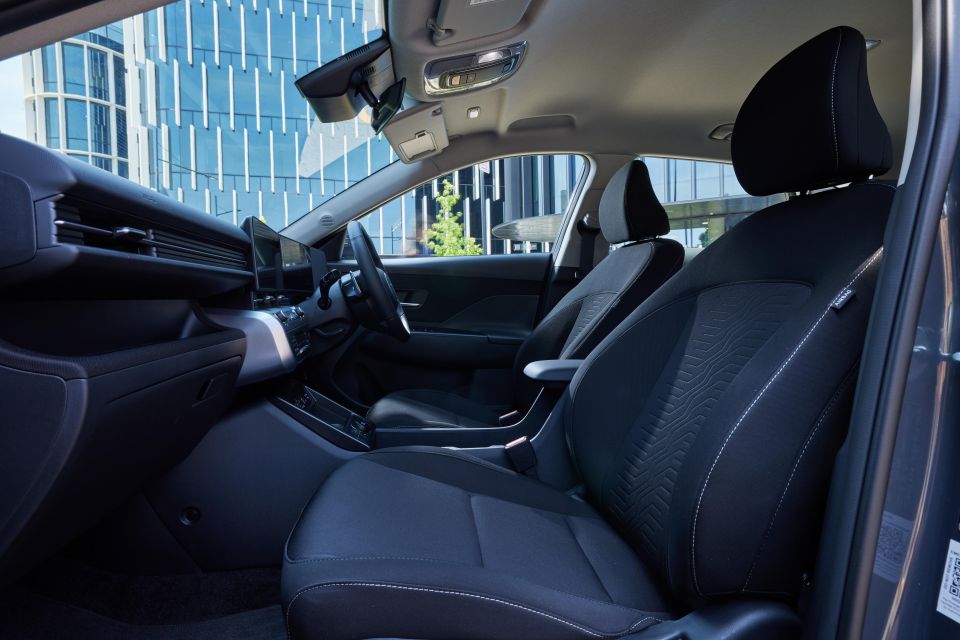

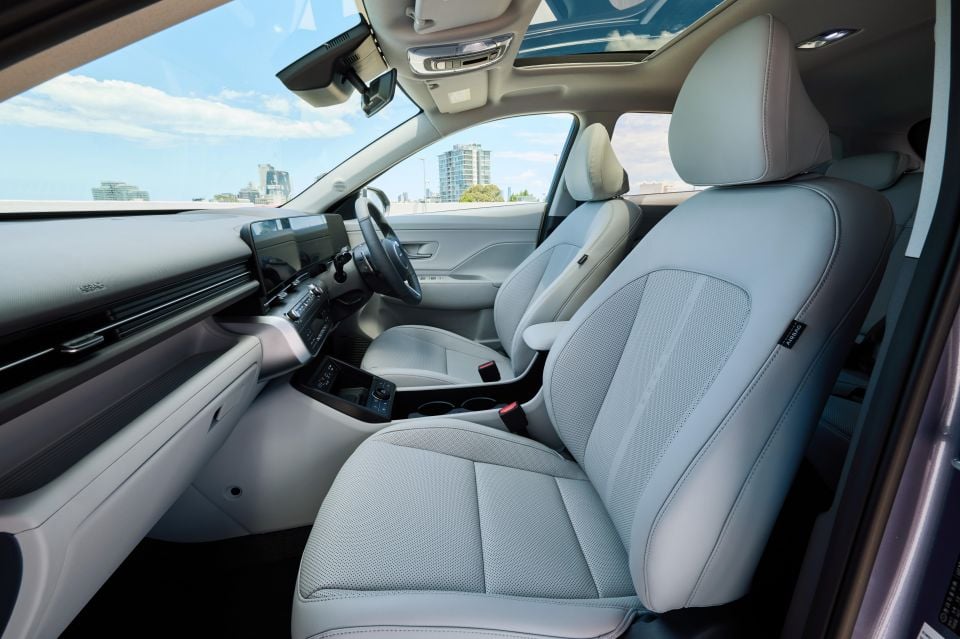
The infotainment software is easy enough to use, and touches such as the move to put the shortcut buttons in the bottom right-hand corner of the screen instead of the top left make life easier in right-hand drive Australia.
We know wireless Apple CarPlay and Android Auto are coming with a software update, but for now cars with factory satellite navigation don’t have it. It remains a frustrating omission.
Hyundai’s digital dashboard is clean and functional, but it’s not particularly feature-rich relative to what you get in a Volkswagen Group product – you can’t have maps in your display, for example.
The flip side? There’s still lots of cheap, hard plastics, from the sides of the dashboard to the top of the doors. We called it out in the petrol, and it’s more pronounced here given the Electric is more expensive again – then again, I’d take hard plastics over some of the weirdness in the Kona’s rivals from China.

Unlike the base petrol, which gets a basic transmission tunnel with an old-school T-bar shifter, even the cheapest hybrid and electric models have a more upscale open centre console. It has acres of storage space, and looks suitably clean and modern.
There’s a meaningful step up in the move from base Kona to Premium, thanks to the leather seat trim and ambient lighting, along with a sunroof that makes the cabin feel more open and airy.
Rear seat space is miles better in this Kona than the last, starting with the wider-opening doors.
Adults don’t need to contort themselves to squeeze in anymore, which is a step forward, and once back there you get levels of legroom and headroom comparable to a Kia Seltos or BYD Atto 3.
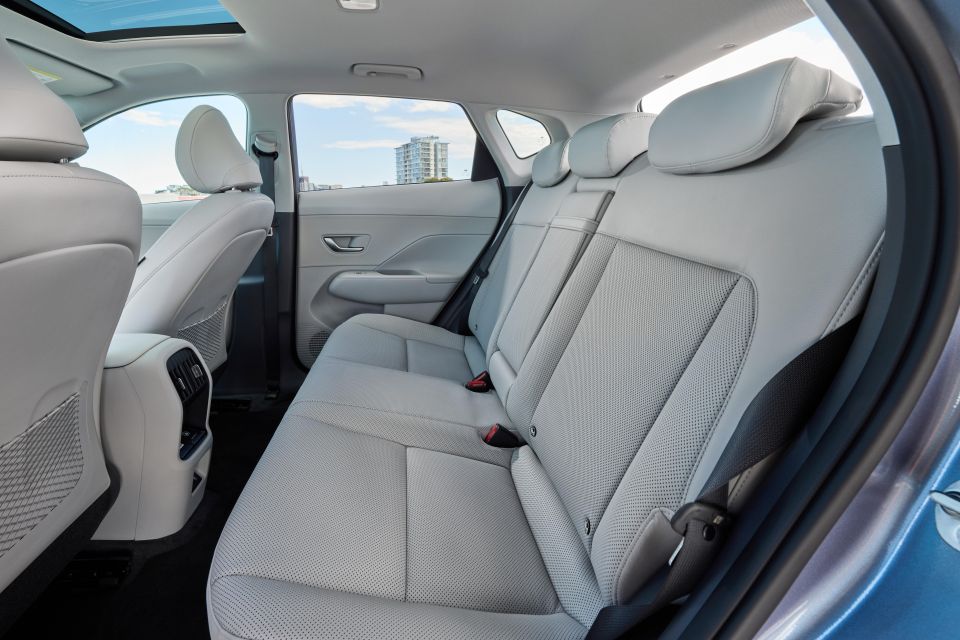
The air vents and USB-C ports are family-friendly touches, and the broader rear bench will keeping warring kids at bay more effectively than before.
You even get a V2L three-pin outlet back there in the rear, allowing passengers to charge a laptop on the move.
The last Kona EV felt very compromised, with a higher floor than the petrol equivalent forcing passengers into an awkward knees-up position. The new model has more toe-room under the front seats, and won’t make long-legged passengers feel nearly as cramped.
ISOFIX on the outboard seats and a trio of top-tether points are present, as is a fold-down central armrest.

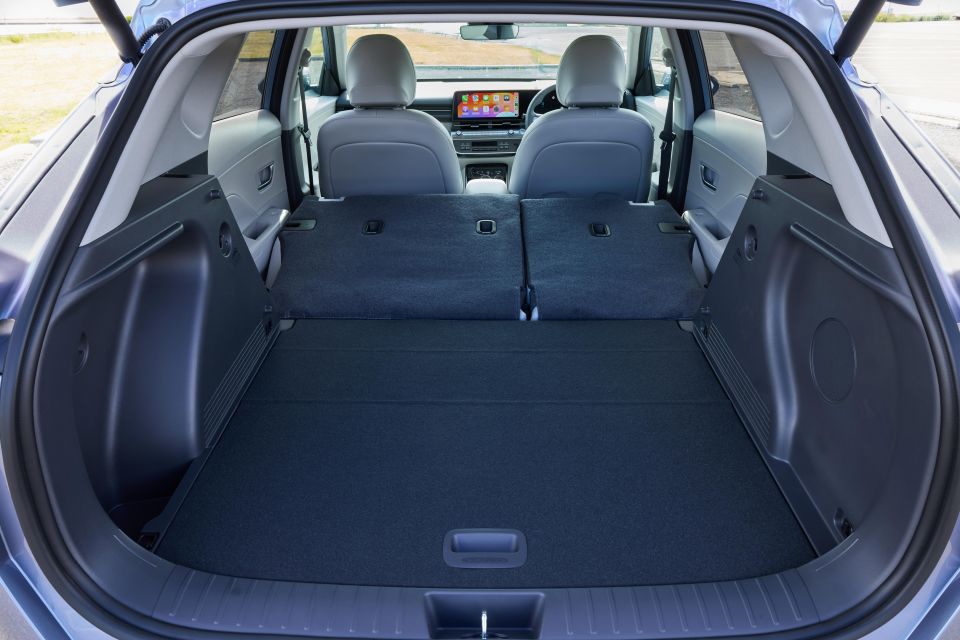
Claimed boot space is a claimed 407 litres (up 75L on the old car, down 132L on the petrol Kona), expanding to 1241 litres with the rear seats folded. There’s space for charging cables under the bonnet in a 27L storage space.
Rural buyers will also be happy to know there’s a space saver spare wheel beneath the boot floor, which is rare in electric cars.
This is a rare example of a car with lower outputs than its predecessor.
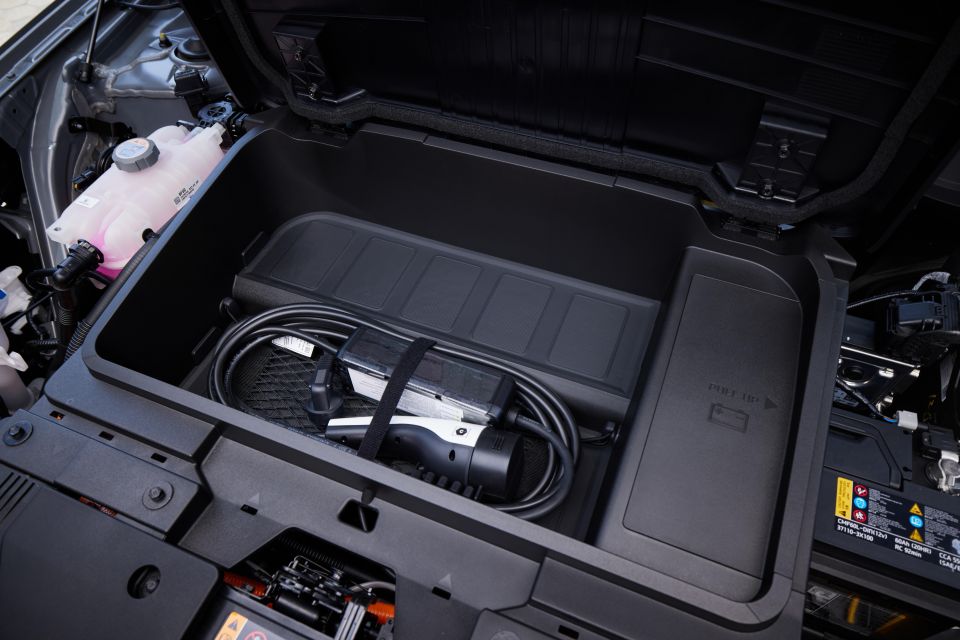
Where the last Kona Electric had 395Nm of torque, the new one has 255Nm. Hyundai says that’s still more than enough, and the change was made to improve drivability.
Having lived with a previous-generation Kona Electric for a while, that’s no bad thing. It was prone to torque steer, and could never really put all that torque down without feeling a bit wild.
| Model | Standard Range | Extended Range |
|---|---|---|
| Drivetrain | Single-motor electric | Single-motor electric |
| Battery | 48.6kWh lithium-ion | 64.8kWh lithium-ion |
| Power | 99kW | 150kW |
| Torque | 255Nm | 255Nm |
| Driven Wheels | Front-wheel drive | Front-wheel drive |
| Weight | N/A | N/A |
| Energy efficiency (as tested) | N/A | N/A |
| Claimed range | 370km | 444-505km |
| Max AC charge rate | 10kW | 10kW |
| Max DC charge rate | 100kW | 100kW |
The Kona Electric isn’t targeted at the sort of person who wants their electric car to feel like a spaceship. It’s remarkably unremarkable, with a flat learning curve for anyone hopping out of a petrol or diesel car.
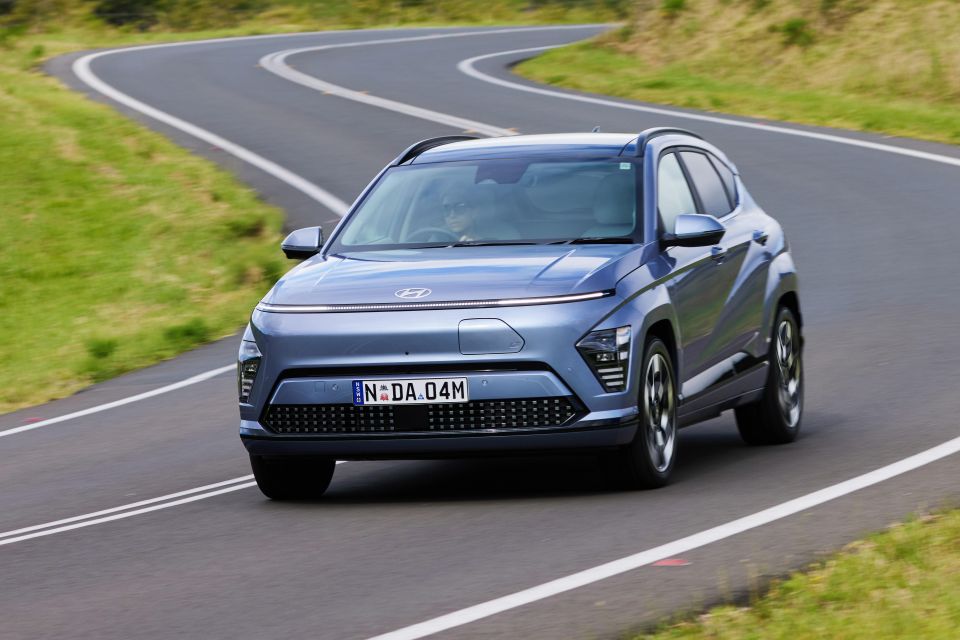
Although its outputs are pretty low on paper, even the base Standard Range is a smooth and punchy car to drive at low speeds.
There’s no neck-snapping surge of acceleration, but the way it performs is more in keeping with the higher-end petrol 1.6-litre turbo than the base 2.0-litre engine at city speeds.
It’s a world away from the last Kona Electric, which was surprisingly fast but prone to torque steer – where the steering wheel tugs in your hands if you accelerate hard on uneven surfaces.
Regardless of which model you opt for, the heavier EV feels more relaxed and comfortable than the petrol and hybrid Kona. Its suspension is softer, which means it floats nicely over bumps in the city, and has a grown-up and luxurious feeling on the highway.
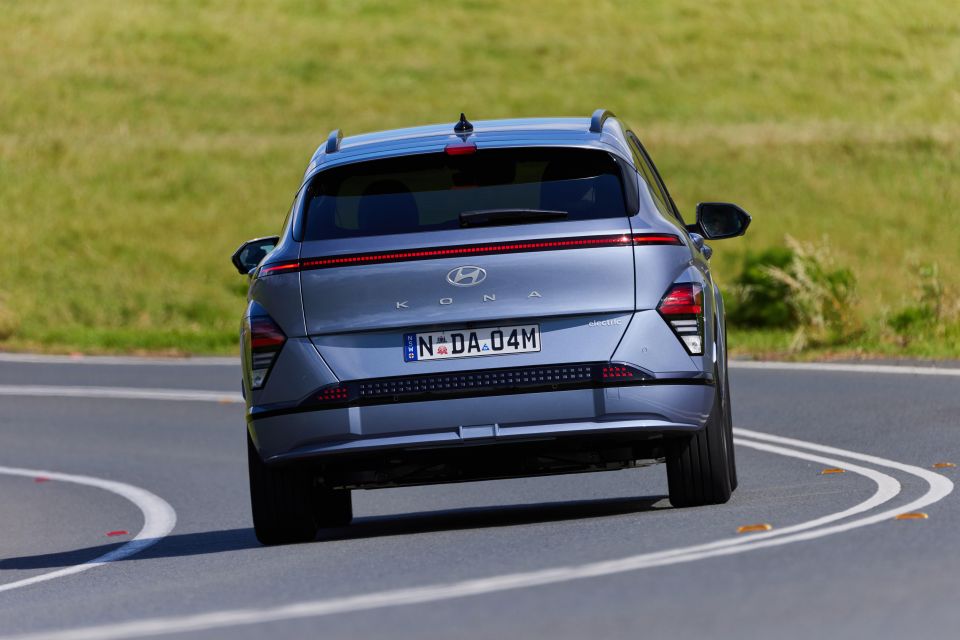
Throw in impressive suppression of road noise, and it’s a nice car to spend time in on the highway. With that said, we’d be looking at the more powerful Extended Range if you are doing more than urban commuting.
Not only does it have an extra 135km of range if you stick with the 17-inch wheels, it has a bit more power than the base model which makes it feel more relaxed when you put your foot down at highway speeds.
With the same amount of torque as the base car though, you don’t need to worry about torque steer at lower speeds even in the more expensive Extended Range.
Regardless of which model you opt for, Hyundai’s regenerative braking has been improved in the transition from the first- to the second-generation Kona Electric. It’s smoother to engage when you lift off at speed, and you’re now able to use Hyundai’s iPedal to avoid needing the brake pedal around town.
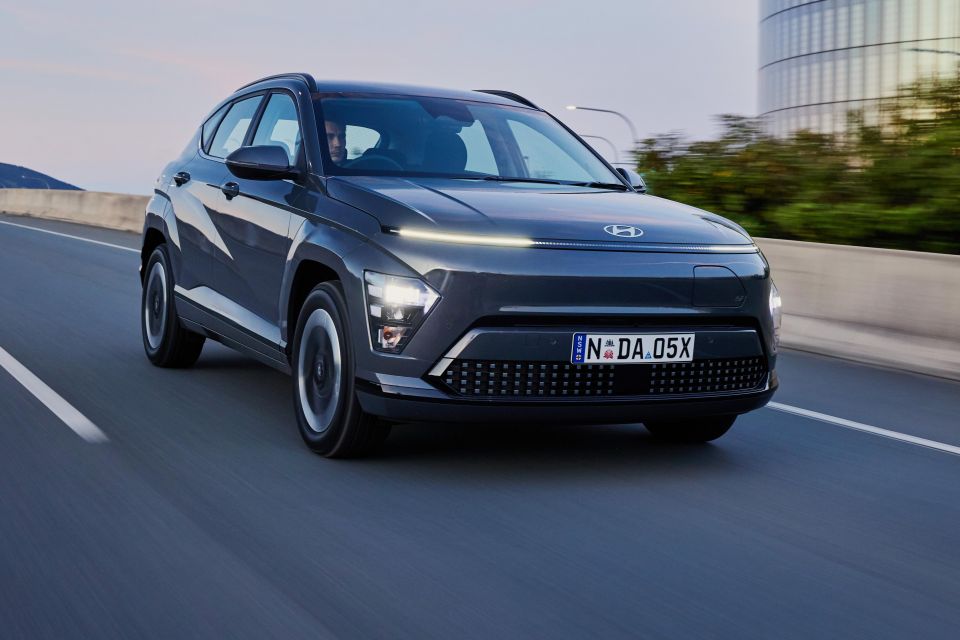
It’s silly that you still need to activate one-pedal driving every time you start the car though; the highest level it’ll default to still requires the driver puts their foot on the brake pedal to stop.
While we’re whinging… The adaptive cruise control does a good job maintaining a gap to the car in front, and the lane-keeping assist decisively nudges you back between the white lines if you stray.
Hyundai’s lane-centring system, which more actively controls the car’s position in the lane rather than intervening when you stray, is a bit too hands-on for my liking, though.
The driver attention monitoring is also prone to false positives, flashing when you actually are looking at the road… which makes you look away. More refinement is needed.


Kona Electric (Base) highlights:
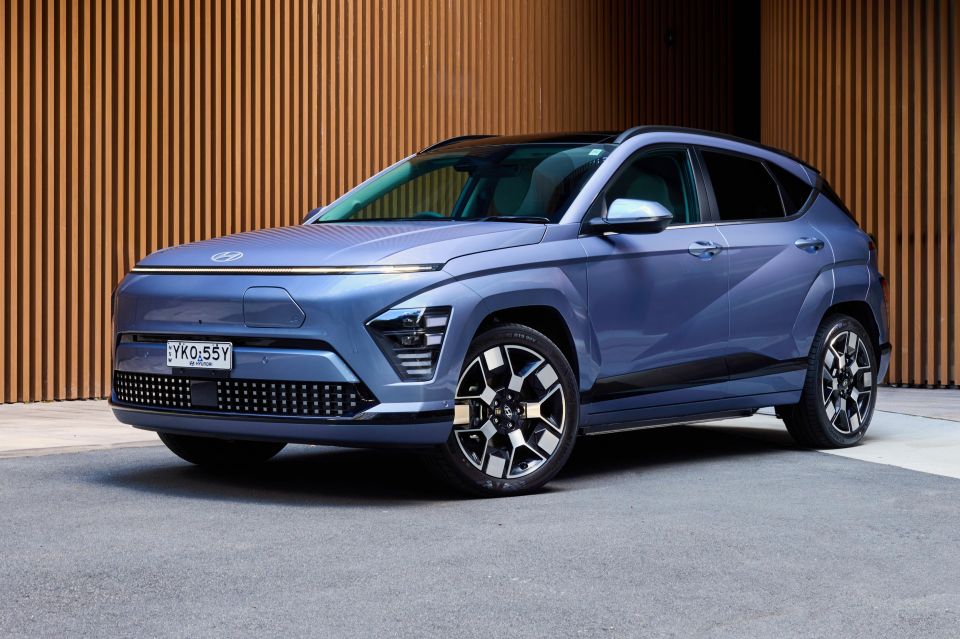

Where expert car reviews meet expert car buying – CarExpert gives you trusted advice, personalised service and real savings on your next new car.
Kona Electric Premium adds:
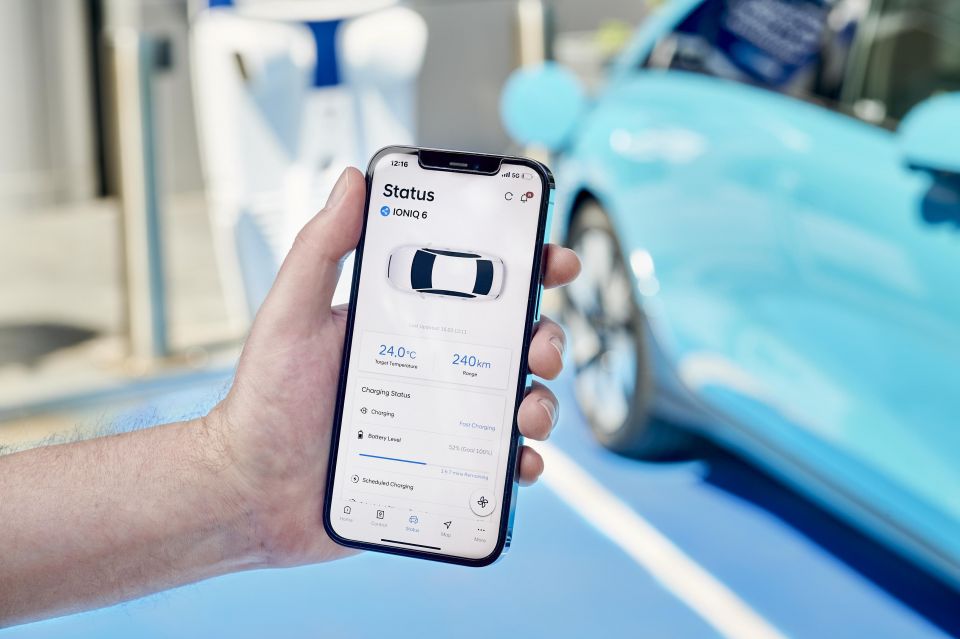
All Hyundai Kona Electric variants also come standard with a five-year subscription to Bluelink connected car services. Available functions include
The new Kona recently received a four-star ANCAP safety rating, based on tests conducted by Euro NCAP.
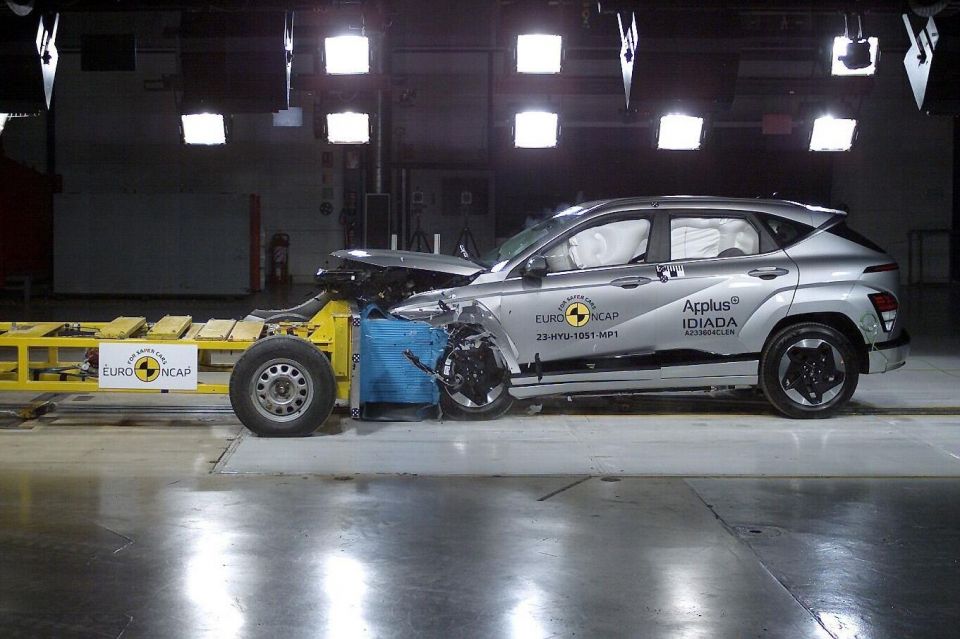
It received 80 per cent for adult occupant protection, 83 per cent for child occupant protection, 64 per cent for vulnerable road user protection, and 60 per cent for safety assist.
To get a five-star rating overall, a car needs to receive scores of above 80 per cent in adult and child occupant protection and above 70 per cent for vulnerable road user protection and safety assist.
Standard safety features include:
Kona Electric Premium adds:
The Hyundai Kona Electric is covered by a five-year, unlimited-kilometre warranty, while it’s high-voltage battery pack is covered by an eight-year, 160,000km warranty.

Logbook servicing is required every 24 months or 30,000km, whichever comes first. The first three services are also capped at $520.
The new Kona Electric fits neatly into Hyundai’s growing range of electric cars.
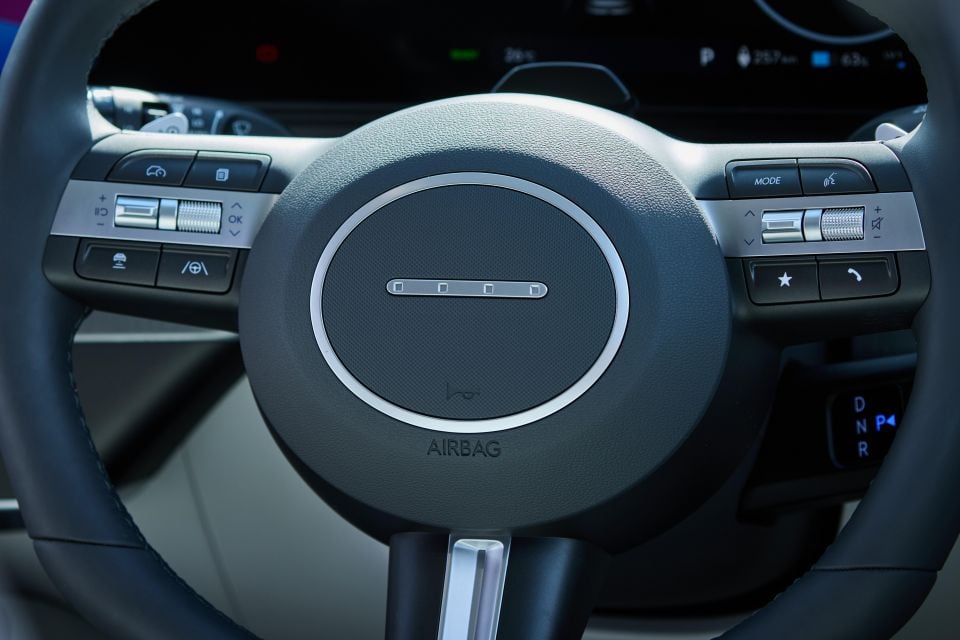
It’s not as out there as the bigger, more expensive Ioniq range, sitting neatly alongside the hybrid Kona as an option for someone who’s ready to go electric… but doesn’t need to shout quite so loudly about it.
The Extended Range base model in particular neatly balances price, range, and performance, undercutting a base Tesla Model Y by $7000.
We’ll need to put it side-by-side with its big rivals to find out where it stands, but the new Kona Electric makes a strong first impression.
Click the images for the full gallery
BUY: Hyundai Kona MORE: Everything Hyundai Kona
Where expert car reviews meet expert car buying – CarExpert gives you trusted advice, personalised service and real savings on your next new car.
Scott Collie is an automotive journalist based in Melbourne, Australia. Scott studied journalism at RMIT University and, after a lifelong obsession with everything automotive, started covering the car industry shortly afterwards. He has a passion for travel, and is an avid Melbourne Demons supporter.


Max Davies
22 Hours Ago
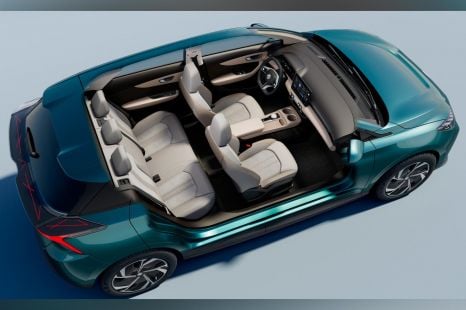

William Stopford
1 Day Ago
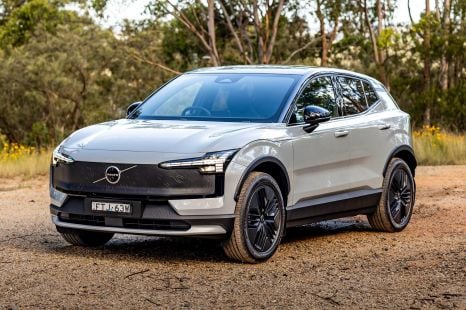

Matt Campbell
3 Days Ago
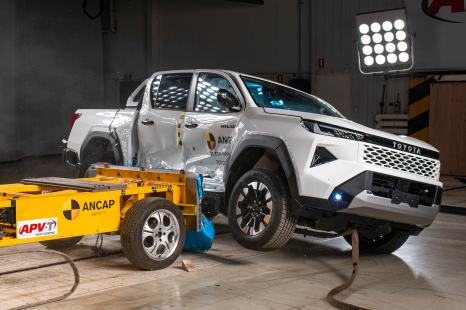

William Stopford
5 Days Ago
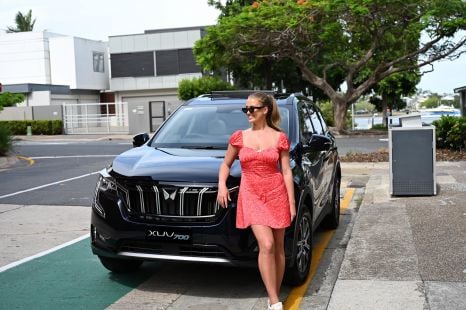

CarExpert.com.au
5 Days Ago


Max Davies
6 Days Ago